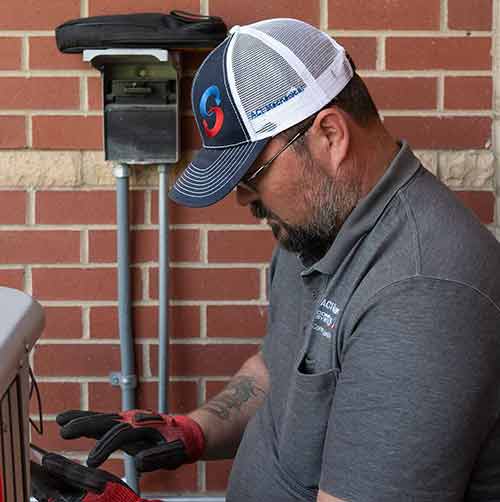It is recommended to wear several layers of clothing rather than one thick layer, to wear synthetic fabrics, next to the skin, to “wick” away sweat, wear a wind-resistant outer layer, and avoid wearing tight-fitting footwear that restricts blood flow. Don’t work alone. Take breaks, as needed, to warm up. During your break, replace lost fluids, but avoid caffeine and alcohol. Watch out for signs of hypothermia in yourself and others: Shivering, dizziness, hunger, nausea, trouble speaking, confusion, increased breathing rate, blue lips and fingers, numbness at extremities, drowsiness, and clumsiness. If these are noticed, bring the person inside to an area where they can warm up
Watch out for signs of hypothermia in yourself and others: Shivering, dizziness, hunger, nausea, trouble speaking, confusion, increased breathing rate, blue lips and fingers, numbness at extremities, drowsiness, and clumsiness. If these are noticed, bring the person inside to an area where they can warm up.
If you are staying inside at home: Have some extra food, a generator with fuel, and temporary heating sources. NEVER use a generator inside a home, basement, shed, or garage, even if doors and windows are open. Keep portable generators outside, away from windows, and as far away from your home as possible. Carbon monoxide poisoning from generators has unfortunately already taken lives this winter. To protect you and your family, installing and testing carbon monoxide alarms at least once a month is also a good idea.
You can take many steps to retain as much heat in your house as possible, especially if there are power outages. Close blinds or curtains to help your house stay warm. Close off unused rooms to avoid wasting heat and stuff towels or rags in cracks under doors.
House fires are common in the winter and can happen if you are not careful about how you heat your home. Be sure to plug only one heat-producing appliance in an outlet at a time and keep anything that can burn at least three feet from any heat source (like a fireplace or radiator). Never use a gas stovetop or oven to heat your home.
Check the local forecasts before you go out. Check 511 for current road conditions. This is available online at https://511ia.org/ and is available on the app store. Plan where you will be and let others know. Avoid waiting until the “last minute” to beat a snowstorm or other inclement weather during your travels. Have a travel kit with some dry food, liquids, a liquid heater (vehicle powered heating cup), emergency blankets, and don’t forget toilet paper. Keep your fuel tank at half or above. Keep your vehicle in good repair. Check the tires, headlights, fluids, etc. Other helpful items: Jumper cables, flashlight, tools to change a tire, snow scoop, chain or strap. Dress for the weather outside the vehicle.
Don’t leave your vehicle unless you must.
Let others know where you are and what help you need. This includes, but is not limited to, calling non-emergency police, family/friends, and employers. Try to make your vehicle as visible as possible by turning on flashers and adding any bright-colored item in an elevated position on the vehicle.
Keep snow out of the tailpipe. It is recommended to run the vehicle for 15 minutes every hour to keep it warm and not use excess fuel. (Note: Most vehicles can idle for 24 hours on half a tank of fuel






